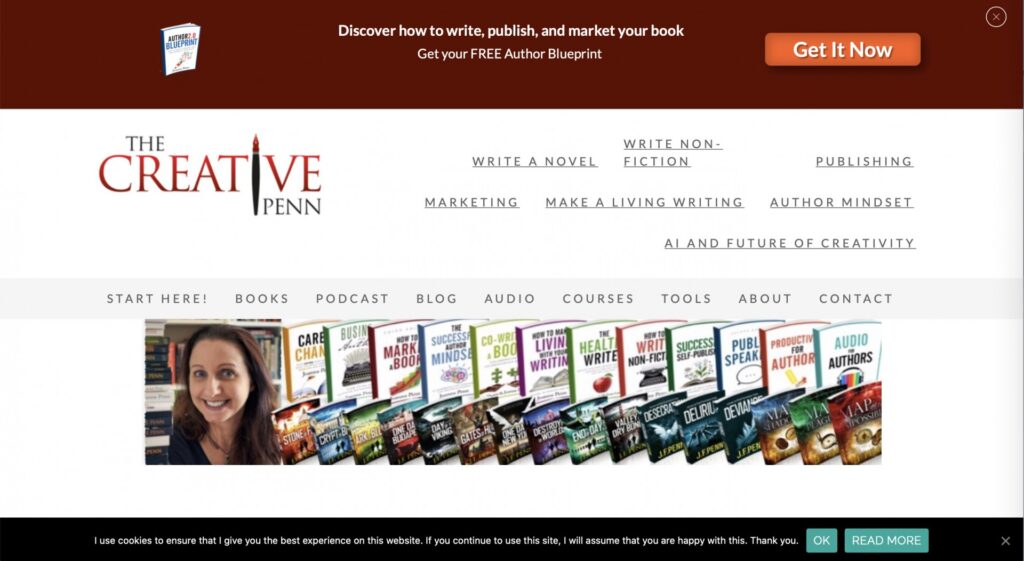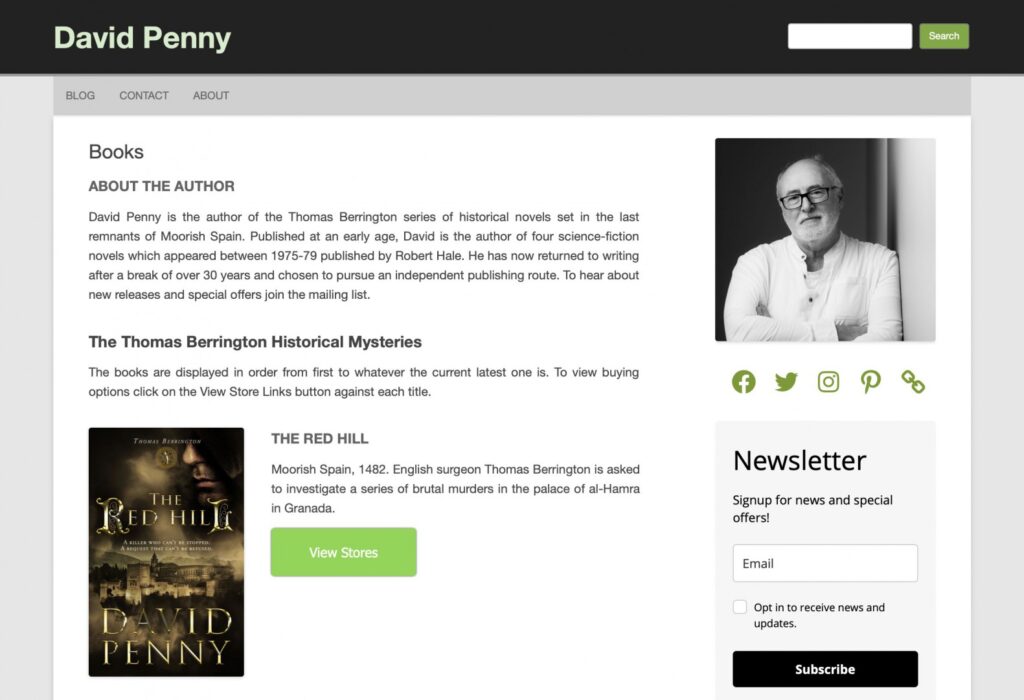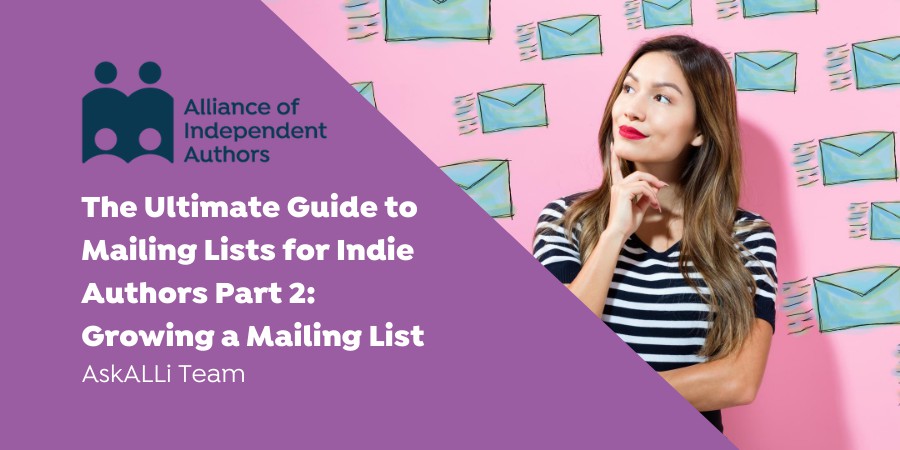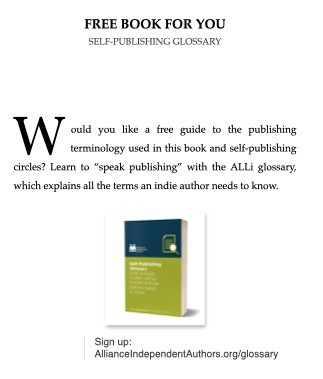In a three-part series starting last week, the Alliance of Independent Authors #AskALLi team is exploring email marketing for authors, how to set up a list, how to grow it, manage it and most importantly, sustain relationships with your readers. With deep thanks to all of our members who contributed insightful comments and a special thanks to David Penny, Melissa Haag, C.J. Archer, Roz Morris and Debbie Young. This is the ultimate guide to mailing lists for indie authors part 2: Growing your list.
See part one here: The Ultimate Guide to Email Marketing for Authors Part 1: Mailing List Strategy.
See part three here: The Ultimate Guide to Email marketing for Authors Part 3: Maintaining a Mailing List
ALLi recommends Tammi Labrecque's Newsletter Ninja books and website if you are seeking a comprehensive guide to email for authors.
Growing a Mailing List: Why Bother?
In the last post, we talked at length about why you need a mailing list. But how much time, effort and money should you put into actually growing it? Crafting your communications with your list is time away from crafting your book.
First, there's the clincher—the larger your mailing list, the larger the audience you launch a book to, the more likely your books are to succeed.
And the readers on your list don't just sit there, doing nothing for a year or however long you take to write a book. The point of the list is to give them something–the same thing they get from your books–between launches. If you don't put some effort into maintaining your list, you'll see huge attrition rates. GetResponse, a mailing list host suggests up to 25-30% loss. That's a quarter of your fans gone… evaporated into the digital ether and all because you didn't do the work it takes to maintain your list.
The good news is that work doesn't need to take up a lot of your time.
Growing a Mailing List: Organic Growth
Arguably, the most loyal and invested subscribers will be those that come to your list from reading your latest book and wanting more. First, how do you capture those readers?
Call to Action
A call to action (CTA) is a short and simple sentence asking the reader to take an action i.e., leave a review or sign up to get updates etc.
As an indie author, it's your job to make sure you're leaving CTAs in as many places as possible. The ideal place to capture readers into your mailing list, is in the back of your book. Why? Because your reader will be warm to you. They've just finished your book and hopefully you've given them a satisfying ending. If that's the case, then chances are they'll want to read your next book too. So bring them into your marketing funnel by leaving a CTA asking them to join your list.
Note you can make your CTA more appealing by adding images and hyperlinks. Here's an example of the ALLi CTA at the back of our guidebooks:
The back of your book doesn't have to be the only place you leave your CTA. You could easily leave another in the front of your book as well. The chances are you'll get fewer sign ups from the front as your readers won't have read your book yet, so they're cold leads. But some will inevitably sign up, so it's worth adding the extra CTA for the few who do.
Website Signup
Alongside your CTA's in your book, if you have an author website—and you really should—then you should have a CTA on your site too. It could be in the form of a pop up, or a banner at the top of your homepage or an image on your homepage or perhaps a widget in the sidebar.
Picture on your Homepage
This example is from OrnaRoss.com where she uses a slim banner, on her homepage and the other fiction pages of her website, with the CTA: Join my reader group for free books and other bonuses.
Banner Example
This example is from TheCreativePenn.com. Joanna Penn's banner runs along the top of her webpage in maroon with a lovely big CTA button stating “Get It Now”

Widget Example
This example of a widget in his sidebar is from David Penny's website. A nice clear big title “Newsletter” with a clear statement of what you get for signing up.

Growing a Mailing List: Reader Magnets
A reader magnet is a gift you give to your readers in exchange for their email address. If you decide to use a reader magnet, then make sure you add a description in your CTAs above. For example, “Sign up to get Joe Blogg's bonus short story”. So what kinds of things can you use as reader magnets? The world is quite literally your oyster.
Fiction Ideas
- Did you delete chapters from your book? Why not use those?
- Have you got maps illustrated? You could always giveaway printable versions of the maps
- Got an idea for a short story set in the same world? Give that away
- How about an epilogue or if you already have one a bonus additional epilogue?
- You could write a prequel or perhaps a couple of scenes set before the book happens but mentioned in your series.
- Character interviews
- Have you had character art work created? What about printable versions of your character art?
- If you have a long series, you could always giveaway the first book
Nonfiction Ideas
- Have you got a cheat sheet linked to one of your books?
- Perhaps a resource guide linked to your topic
- What about a bonus chapter?
- Could you giveaway a mini guide or summarised version of one of your books
- What about giving away a workbook version of your main textbook?
- You could always create a mini short course linked to your content
- Or perhaps a tutorial video series
Poetry Ideas
- A digital chapbook
- Word-art editions of your poem
- Illustrated printable download with paper and framing recommendations
- Inspirational quote series
- An audiobook of you reading some poems
- A guide to reading the kind of poetry you write
- Printable cards with occasional poems for Valentine's Day, Mother's Day etc.
- An ebook of themed poems with some classic, out-of-copyright poems that you admire interspersed with yours
Growing a Mailing List: Promotional Growth
If you want a harder more aggressive approach for growing your mailing list, then you can always set a budget for advertising and try your hand at paid advertising. Make sure your budget is something you can realistically afford. Paid advertising always requires a learning curve and therefore there will be some wasted spend while you perfect your advertising copy and targeting.
Free Advertising
Before we dive into paid advertising there are, of course, free options. You could team up with other authors to promote each other's reader magnets. They can share your reader magnet in their mailing lists, or on their social media sites, and you share theirs. If you go this route, work with authors in your genre and niche, so that your readers will genuinely enjoy their content.
Your Own Social Media
Just as you should encourage your audiences to leave reviews, so too should you promote your reader magnets or mailing list on your social media profiles. If you don't remind your audience that you have a reader magnet or mailing list, how do you expect them to remember?
Promoting a First in Series or Free Book
Of course, if you have a first in series or prequel that's free with a solid CTA in the front and back of your book, then pushing advertising spend at your published free book will also generate sign ups. Plus, you have the added bonus of potentially gaining sales from readers wanting the sequels.
Growing a Mailing List: Targeted Marketing Services
There are a variety of services that run giveaways or subscriber sign up option in exchange for a reader magnet. For example, BookSweeps runs genre specific giveaways where readers will choose who they wish to sign up to hear more about in the process. You're then given these subscribers at the end of the giveaway. Always remember to remind readers how and why they joined your mailing list.
In addition, make sure that any giveaway you do or service you pay for are using ethical processes and GDPR compliant methodologies. StoryOrigin works in a very similar way but it also has the added bonus of a dating like service where you can team up with authors in your genre to run your own giveaways.
Growing a Mailing List: Member Building Experiences
Ideas for Growth
Melissa Haag website

Melissa Haag
“I have three main methods for Newsletter growth.
Organic: The link to sign up for my newsletter is at the end of every book in the Author's Note. I state that they'll receive updates about my writing and exclusive content as a member of my newsletter. (I also have the sign up on my website, but most seem to find me through the backmatter.)
Social: I occasionally mention my newsletter on all my social channels, encouraging fans to sign up for free content.
Advertising: I occasionally run FaceBook ads to a specifically targeted audience, advertising a free book or content. The link sends them to BookFunnel, where they can download the content for free in exchange for their email.
My list has grown by 1k+ so far this year using the methods above. The subscribers are then segmented based on how they joined. This helps me watch my organic growth vs. advertising growth. It also helps me determine which group clicks through when I sent new release news, which is the ultimate goal…to sell the books I've written. Based on the segments and how they've joined, I then have an automation set up (one for each of my pen names) that introduces me and the books I write.
To retain readers, I provide new content every month. Often that includes quotes and teasers for upcoming releases, early cover reveals, and random facts about me on a personal level. The readers love the random facts and have told me they open the emails just for that. In addition to that, I send occasional surveys asking which book they'd like me to write next, which often gets a lot of interaction. (Note: I send my newsletters monthly and try to keep them short and to the point.)
I also clean my list yearly, removing any subscribers who are no longer actively respond to the emails by opening it or clicking on any of the links. This keeps the list active.”
Joseph Alexander

Joseph Alexander
If you would like to watch the whole interview with Joseph about mailing lists, you can find it on ALLi's YouTube channel here. Below is a section of summarized transcript:
What advice or tips or tricks do you have for building your mailing list?
- The easiest way to do it is with a lead magnet, like a novella or character case studies or for nonfiction books, almost anything that's related to the content of your book. But make them valuable downloads.
- Create a one-page advert, probably at the end of your book and the beginning, to where people can click on the link or, go to a web page to download your content by entering their email address, and then that email address gets sent to your mailing list.
- For delivering, lots of authors use BookFunnel, or you can deliver it from your own website (that's what we do).
- Once they're on your list, I think it's very important to be organized about it. If you've got two series, have two separate download pages, add them to a different list or a different segment, so you know what you're saying to people. If you've written a light series and a dark series, you don't want to send light series emails to the dark series people.
- If you're writing in a series, the strategy really is to advertise the first book in that series with your lead magnet, very, very hard. Amazon adverts, Facebook.
- Focus on book one and then use email to take care of book two, three, four, et cetera, you'll save a fortune in ad spend.
Advertising for Growth

David Penny
David Penny website
“I've only in the last 6-8 months concentrated on my mailing list, but what I did to lift subscribers from 20ish to 2000+ is this:
I created a prequel novella for my series and offered it free for sign up. In my opinion, this appears to be the only way to get significant numbers. I created a single FB Ad targeted at anyone who had interacted with my page. In terms of sending stuff out, I try to only email when there is news so it might be once a month or once a quarter. I try not to bombard subscribers with information they don't need. Other things I've tried are newsletter swaps which worked to some degree though I am still a bit uneasy at the concept of swapping subscribers and maybe recommending a book I haven't even read.”
Organic Growth
C.J. Archer website

C.J. Archer
“All of my 19k mailing list subscribers have been gained organically. I don’t get involved in promotions where you obtain the emails of readers who downloaded a bunch of freebies. Those people aren’t interested in my books, only gathering freebies. I only want engaged subscribers who like MY books and will read the newsletter and click on the links to pre-order or buy. I have 2 free stories hosted on a password protected page on my website, and the password and link to that page are given out via an automated email during signup. These stories are exclusively available to my newsletter subscribers and are never available at the retailers. Both stories (around 30k each) feature one or more main characters from my series and the plot centres around a backstory event that is hinted at in the series. One of the stories actually links 2 series together by having characters from each series meet each other. I tell readers at the back of each book how to get these stories and give a direct link to the signup page on my website. It’s a simple way to get readers to subscribe, the only cost being my time to write the stories and the editor’s fee.”
Roz Morris website

Roz Morris
“Organic all the way! I really hate the reader-magnet mindset because
1 – I'm not tempted by them myself
2 – I don't think they build a relationship with readers
3 – I don't think I'm writing the kind of books where reader magnets are a good way to find ‘my people'.
I also hate website pop-ups. It's like being leaped on by a pushy sales assistant as soon as you look at something in the shop. And they're not intelligent – they seem to hassle everyone, even if they're already a subscriber.
However, I do give plenty of hints that I have a newsletter and I mention it whenever it seems relevant – at the ends of my books, at the ends of all my blogposts, on the sidebar of my blog, in my email footer, when I give an online course. Anywhere where I've already started that relationship by giving a little of myself, my writing, all that stuff.
I send a newsletter every month. I don't release books very often so I can't keep writing about the book I'm doing. Instead, I write a column of creative life, which people seem to like! I often get nice emails in response. Occasionally I hold a giveaway if I have something that seems suitable, but I hope to keep people with me by just my writing. It's not fast, but it's genuine.”
Reader Magnet Growth

Debbie Young
Debbie Young website
“My mailing list magnet is a short novella (13k) words, “The Pride of Peacocks”, which is a spin-off from my first series, also introduces my second series, and has a beautiful cover that echoes the style of both series. It is not available to buy, and so if readers want to read it, this is the only place they can get it, and it will be of interest to them whether they have read none of my books, some of my books or all of my books. I also mention the magnet in the back of all my books.
I have a WordPress website with a Mailchimp signup form integrated in the sidebar which appears on every page. I have recently added a pop-up which has increased sign-ups. I don't do newsletter swaps or anything like that because I want to keep my message in my newsletters simple, and to send them to look at my books and website, not at other people's!
Debbie's Reader Magnet
I only send a newsletter when I have something newsworthy, and I keep it short and simple – eg a new launch or a global promotion. It's never usually more than monthly. To encourage people to read the newsletter, the last item in each one is a prize draw which everyone may enter – the prize is either a signed paperback (when I'm doing an ebook only promo, so that paperback readers don't feel left out), or something quirky and fun to do with one of my books. For example, when announcing my latest novel set on a Greek island, “Murder Your Darlings”, the prize was a Greek cookery book (Greek food gets mentioned quite a lot in my novel!) I've also bought a Prefect's badge that I'll be using to promote my boarding school series. So organic growth for me, but also a bit of fun! (By the way, I really hate doing newslettters – dreary and slow to set up, so the bit of fun with the giveaways is an incentive for me to actually do them!)”







